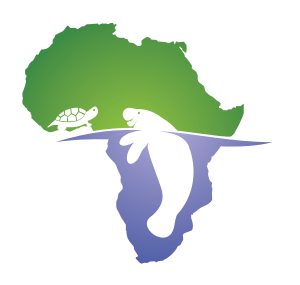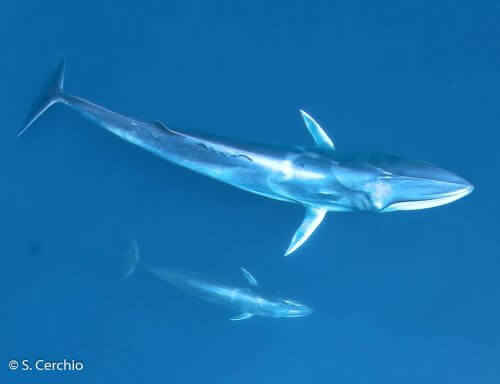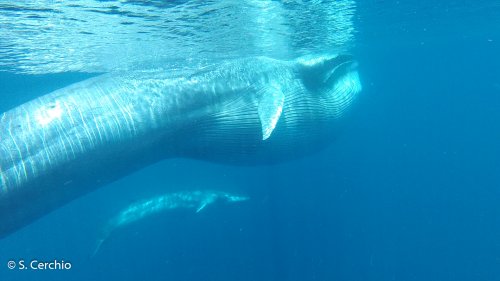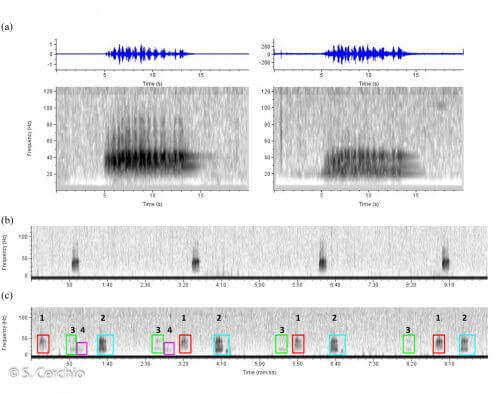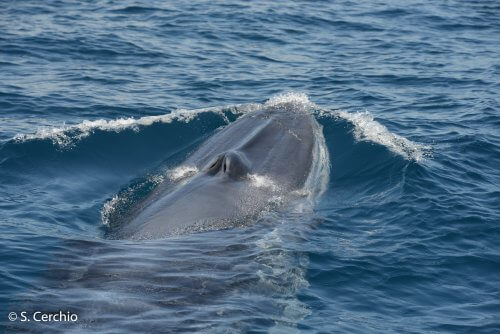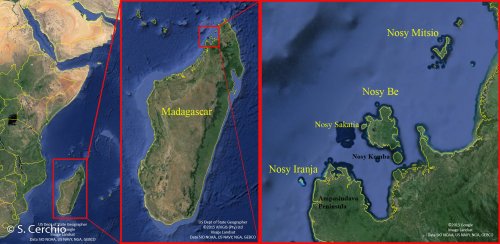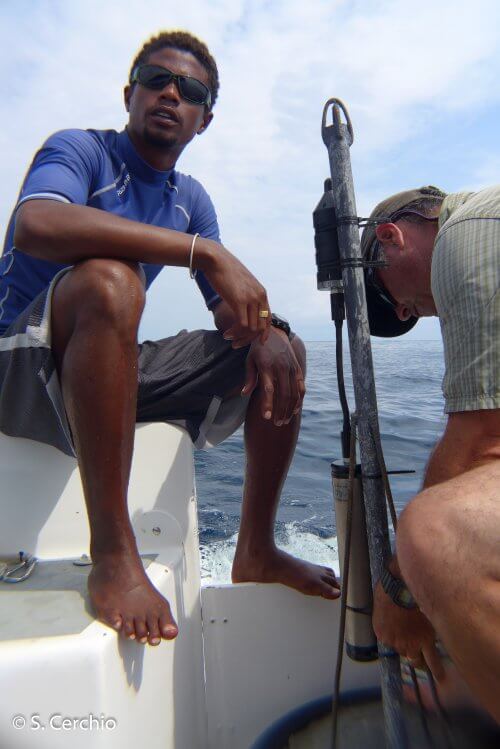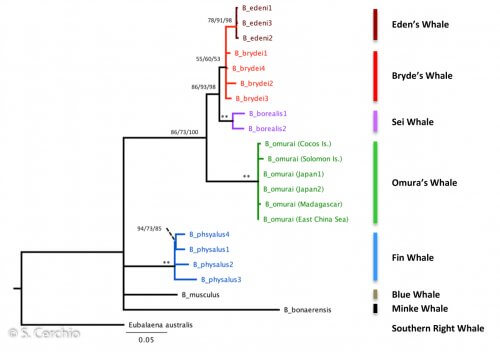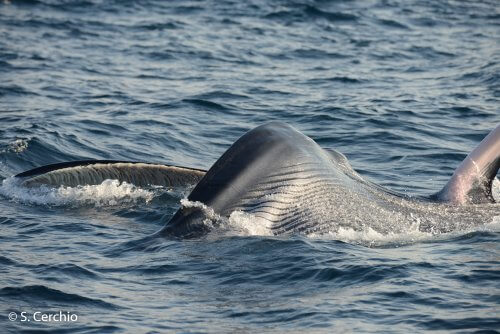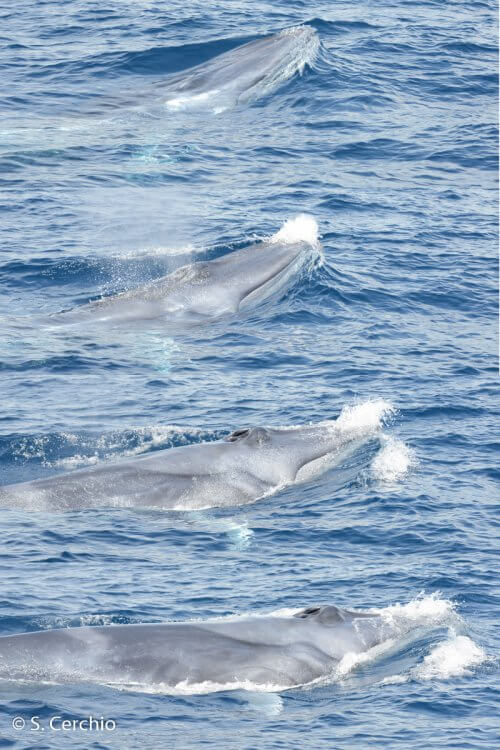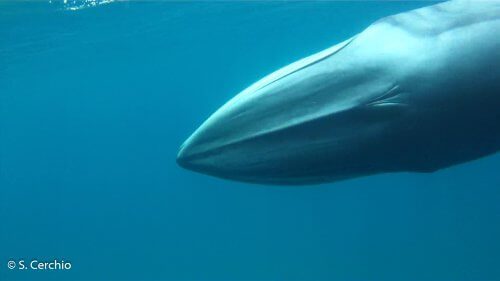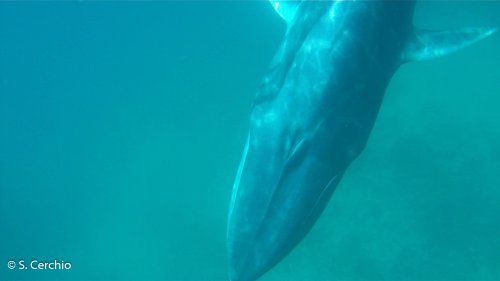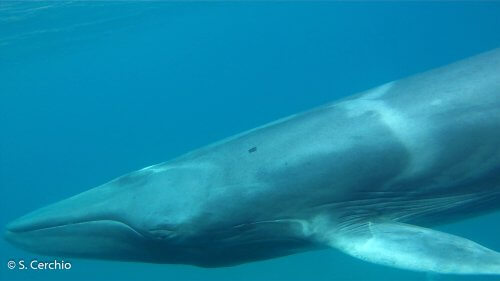Program Description
The Omura’s whale (Balaenoptera omurai) is a recently discovered species of baleen whale, first recognized as a distinct and ancient species in 2003. It is a Mysticete, or baleen whale, belonging to the family Balaenopteridae, or rorquals. Prior to its discovery, the Omura’s whale was confused with the slightly larger Bryde’s whale, which is also a tropical rorqual. At the time of its discovery, it was known only from a handful of strandings and whaling specimens from the western Pacific and eastern Indian Oceans, and never documented in the wild.
In 2013, a team of biologists led by Dr. Salvatore Cerchio made an exciting discovery off the northwest coast of Madagascar: the first population of the rare and poorly understood Omura’s whale that could actually be studied, found off the northwest island of Nosy Be. Since then, Dr. Cerchio’s team has published the first scientific study on the ecology and behavior of the species in the journal Royal Society Open Science. This is the first and only project to study the Omura’s whale in the wild! We are just beginning to learn about their behavior, ecology, and conservation needs.
The Madagascar Omura’s Whale Project employs a diverse set of methods to study the biology of this species in an integrative manner:
- Photographic Identification (Photo-ID) – like most other cetaceans, individual Omura’s whales can be identified from natural markings. We use the dorsal fin shape, nicks and scars, and body coloration. Re-sightings of individuals across years and within seasons are used to estimate the abundance of the population and define movements and ranges of individuals.
- Skin Biopsy – now routine in research on both large and small cetaceans, small samples of skin are harmlessly collected with biopsy darts delivered with a crossbow or compressed air rifle. Skin samples allow the analysis of genetic material for phylogenetics, population genetics and molecular ecology (paternity and relatedness). In addition, we will be using stable isotope analysis to make inferences on what the whales are feeding on.
- Bioacoustics – we use boat-based and remoted bottom-mounted hydrophones to collect acoustic recordings of Omura’s whales’ vocalizations. These recordings are used to learn about the species vocalizations, singing and breeding behavior, as well as define their presence throughout the study area with long-term Passive Acoustic Monitoring (PAM). Three years of continuous monitoring in their known habitat have indicated that the population is non-migratory, sings year-round, and strongly prefers shallow shelf habitats.
- Plankton Tows and Feces Collection – we use fine nets to collect plankton in the vicinity of feeding whales, and feces from defecation plumes (more affectionately referred to as poop samples). These samples have indicated that the whales are feeding on episodic blooms of a widespread tropical krill species, Pseudeuphausia latifrons, and analysis of stable isotopes will tell us more about trophic interactions and feeding ecology of the whales.
- Satellite telemetry – we use small satellite tags (Low Impact Minimally Percutaneous Electronic Transmitter, or LIMPET tags) attached to the dorsal fin of individual Omura’s whales to track their movements, define their home ranges, and describe their movement behavior. Four whales tagged in 2016 revealed a very small home range of <400km of coastline over a 2 month period, and indicated areas of localized movement likely associated with foraging grounds.
- Unmanned Aerial Systems – we use aerial drones to film the whales from directly above, providing not only spectacular video footage of these beautiful creatures, but collecting morphometric data that will be used to define fundamental aspects of its biology and assess health and condition. Aerial images will be used to measure the length and proportions of known individuals, define differences between sexes and age classes, and study the feeding behavior and biomechanics of whales as they lunge on swarms of euphausiids.
Learn more about the Madagascar Omura’s Whale Project at its dedicated website, https://www.omuraswhale.org

